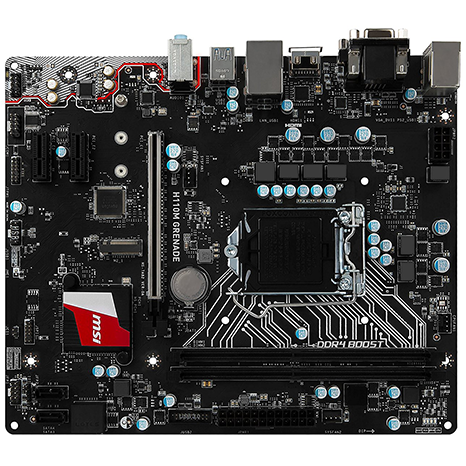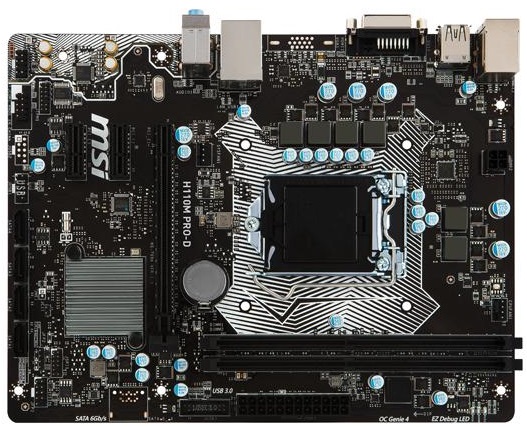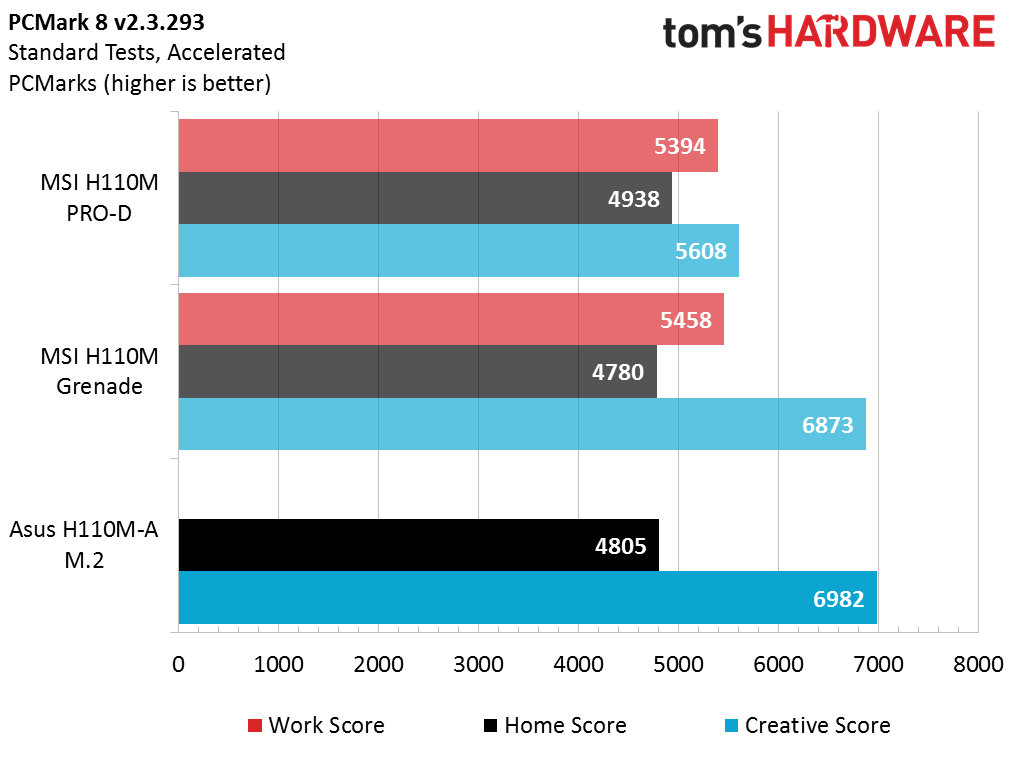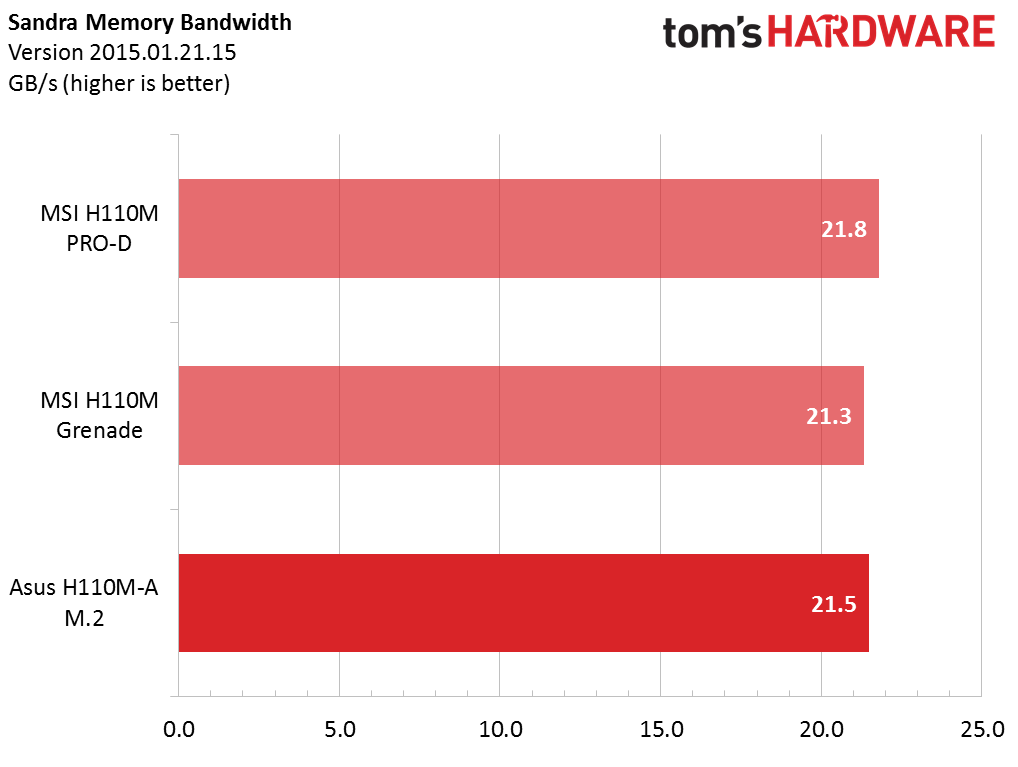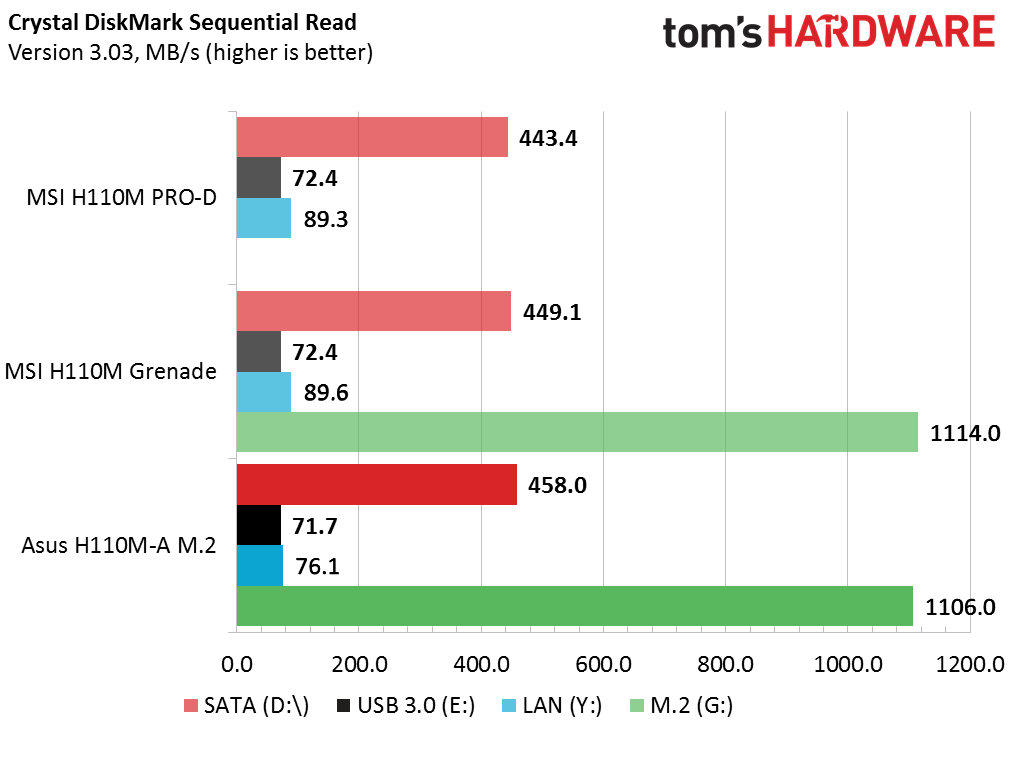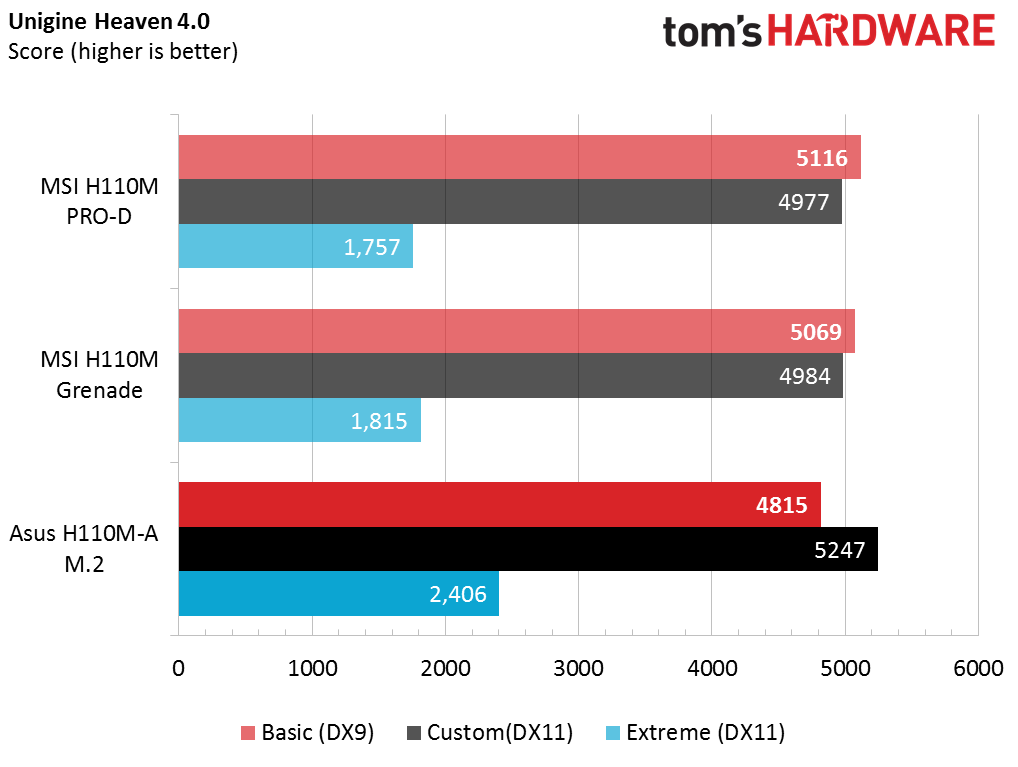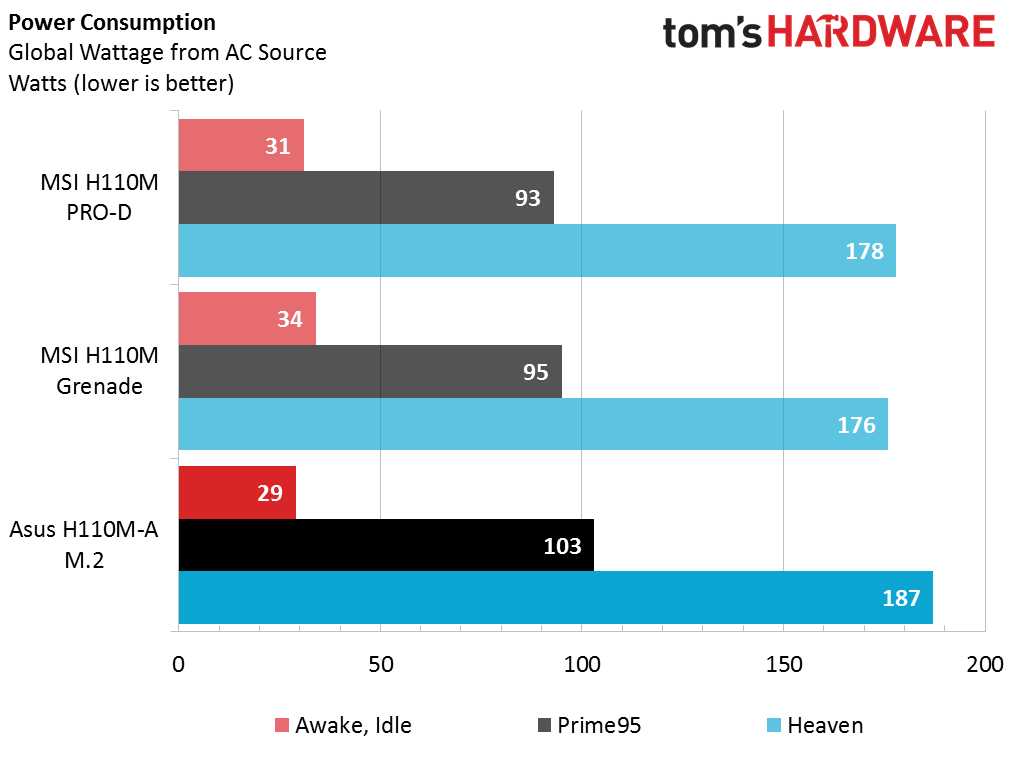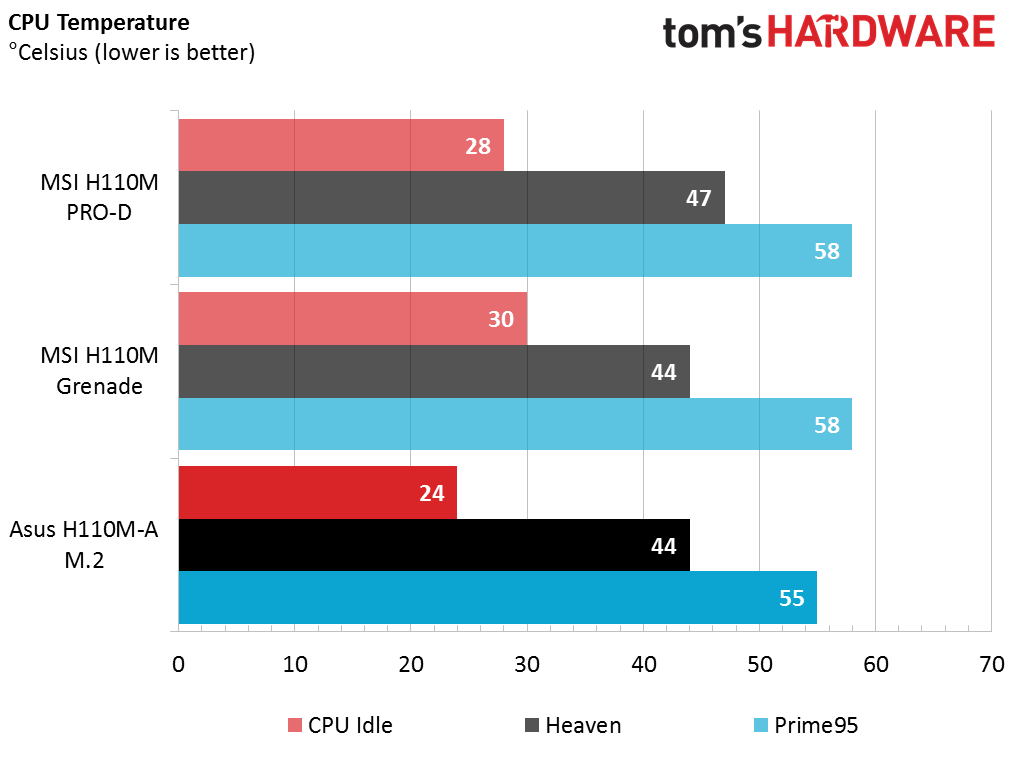Asus H110M-A M.2 Motherboard Review
Why you can trust Tom's Hardware
Benchmark Results & Final Analysis
The test environment is unchanged from prior B150 and H110 reviews. We use an open-bed Lian Li T60 case, with only the motherboard different from one review to another.
Comparison Motherboards
I’ve been asked to incorporate a suite of additional tests into future reviews. I'm very interested in reader feedback about how well this distinguishes one mainstream board from another, and whether it helps inform your buying decisions. This review may be the last one using the limited test suite that serves as a coarse look at each subsystem of these boards, checking for sluggishness or gimp.
Here are the test results, starting with PCMark8.
Today’s board cannot run the Work benchmark. We check all the usual suspects, and don't find a visible problem. Crashman’s suggestions along those same lines turn up no clues. Since the board runs every other test, some considerably more demanding, we're not going to blame the board for what is more likely a software issue. In any case, the scores are otherwise not remarkable, except that the vanilla board is slowest on the Creative test by a significant margin. We suspect the presence of the M.2 drive is assisting the two faster boards, because the slowest one lacks this feature.
There the H110M-A M.2 sits, right in the middle.
The only score here that is notably different is LAN throughput, where the H110M-A M.2 lags by almost 15%. Since we're using the stock drivers shipped with each board, it is possible that Asus’ are out of date. Referring to the features table, the choice of LAN controller (Realtek vs. Intel) is not the difference.
The DX11 and Extreme settings strongly favor today’s sample. We reloaded saved graphics drivers from a standard set, so we don’t have a clear explanation, unless Asus’ motherboard drivers for PCIe are simply better.
Get Tom's Hardware's best news and in-depth reviews, straight to your inbox.
Less at idle, more under load. This is consistent with the better performance noted in the previous test; perhaps the performance improvement involves some kind of clocking default that also sucks down more juice, or perhaps having only three power phases prevents a more granular control.
The H110M-A M.2 does quite well Under the Noctua cooler, which is another reason to suspect the default Intel cooler of some kind of fitment issue. Even though this board uses more power under load, the CPU stays very comfortable.
Final Thoughts
Like other Asus boards I’ve owned, the H110M-A M.2 is solidly built, with quality components. In some cases, its performance is notably better, which, in our experience, is rare from one motherboard to the next. We’ve been more likely to find a deficit if there’s any real difference. To say that Asus’ H110M-A M.2 is not “Approved” (award wise) would be a disservice. Any board will have shortcomings, and if those of this particular model are not important (e.g. the lack of diagnostics or a potentially blocked PCIe2.0 x1 slot), a mainstream build will not suffer from it. That’s as far as I can go, though; I do play some games, and I do run multiple programs (six are open now, not counting system-tray applications like anti-virus, Steam, multiple driver interfaces, etc.), so I prefer to see more than 3+1 power phases, and lower power consumption matters more to me than it does to many others.
MORE: Best Motherboards
MORE: How To Choose A Motherboard
MORE: All Motherboard Content
-
Onus It's a good business board, although I'd want to be certain that the stock coolers typically used in such builds are going to work properly.Reply -
joz I own two of these in my business computers. They were the cheapest 'quality' boards with m.2 support. Though, in hindsight, I'd rather have gotten the MSI H110l-Pro. It is a sexy motherboard compared to the -A.Reply
That being said, no complaints about the H110M-A from me. I did not encounter any stock ISF issues - temps were ~35c-40c idle. One pentium, one i3. I could go take them apart and check, but they've been running fine. -
vdorta I used this board for my recent build, an everyday internet and word processing computer. You have to update the BIOS and drivers for it to work flawlessly.Reply -
genz It's actually funny because the introduction of this article makes it sound like Tom's are the Mafia and are slyly trying to tell ASUS they would get better reviews if they gave them the motherboards free haha.Reply -
shrapnel_indie One note on the CON of only two RAM slots: AFAIK, the H110 chipset was limited to just the two RAM slots.Reply -
clutchc I have this board with a i5-7600 in a budget gamer. I did not notice the CPU temp issues using the included stock cooler, but I did notice a problem that made me install an aftermarket cooler. During normal day to day use, the cooler fan would cycle from low RPM to higher RPM so often, it became an audible nuisance. While I didn't notice the temp rising beyond normal, I wish I'd have thought to pay attention to the TIM spread when I replaced the cooler.Reply -
RedJaron Reply
If that's your takeaway, you're reading WAY too much into it.19776739 said:It's actually funny because the introduction of this article makes it sound like Tom's are the Mafia and are slyly trying to tell ASUS they would get better reviews if they gave them the motherboards free haha.
Products are submitted for review in many ways. Most often the manufacturer simply sends in a sample. Sometimes they ask for the samples back, sometimes not. But no one requires the reviewer to buy the product first ( "Hey, Car & Driver, we'd love for you to test drive and review the new Porsche / Ferrari / Lambo, but you're gonna need to buy it first." ).
When Tom's wants to do a product review on a certain range of products, they send out an open invitations to every manufacturer. No one is excluded. If a mfr responds saying they want to participate, they can make any special request at that time and each are handled individually. However, some mfrs don't respond at all.
More common is for mfrs to initiate contact, saying they have a new product launching and offer to send us a sample. However, sometimes we see a product requested on the forums or other places that was not submitted to us. In such a case we may purchase it directly for review ( or possibly the reviewer pays for it out of their own pocket because they want to review it that badly ).
If you want to criticize a review for its methodology, missing factual points, or on empirical data, go ahead. Saying a writer or Tom's as a whole is on the take or shilling products for company A or mfr B without proof is a big no-no. -
skyviper80 My company uses this board for our business computers that we resell and overall it's a solid piece. Over the pat 2 years we've sold over 100 units to various SMBs and so far have only had one board fail, which ASUS replaced for us. Downside is the increasing price, originally $54 when released and now selling for $60+ when you can find them in stock.Reply -
Onus I bought this one. I'd seen lots of requests for Asus, but they never decided to participate. I thought it worth a look anyway. For people who build lots of the same unit and don't go in their cases (e.g. businesses), this is an excellent choice. Some of "us" might prefer some kind of diagnostics, but might not care.Reply
